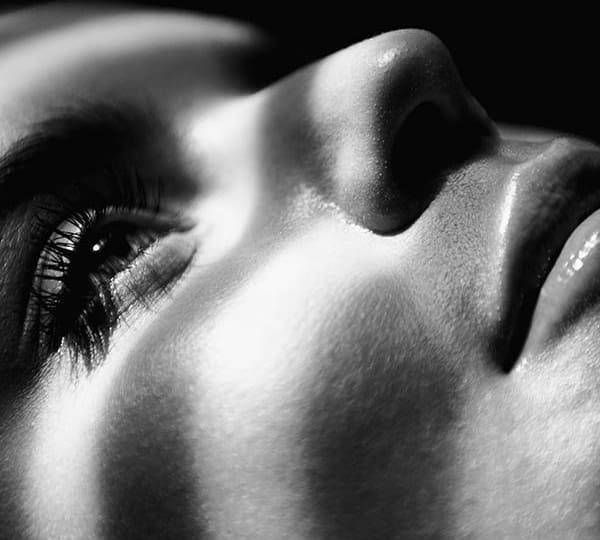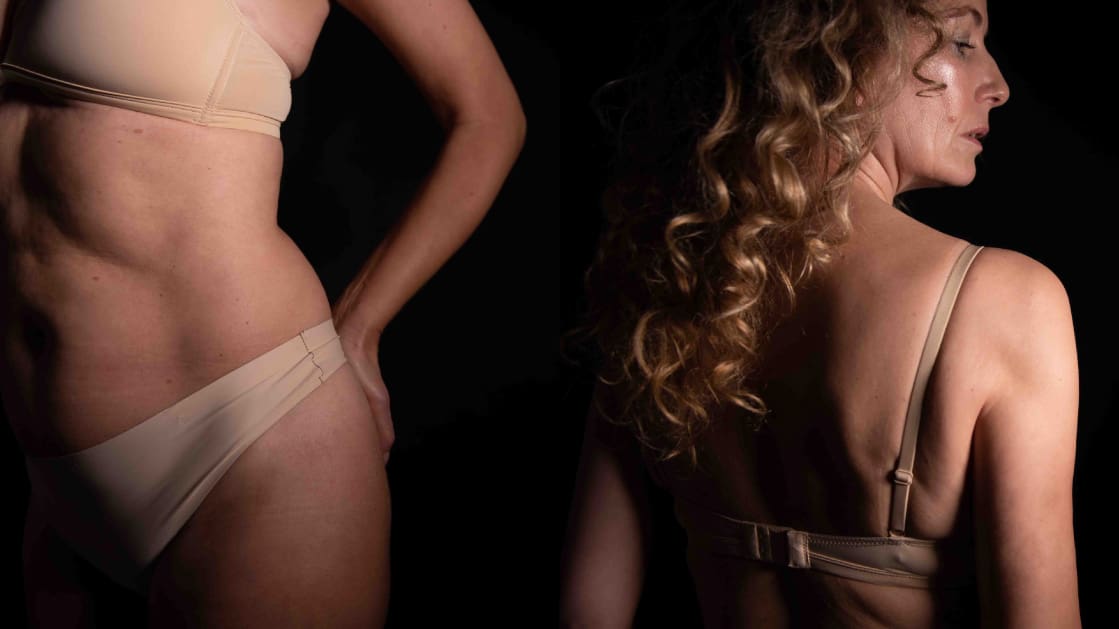McKeown Medical
167 Bath Street, Glasgow, G2 4SQ
Date posted — 8.04.25

Sun exposure is an unavoidable part of daily life – and that’s not a bad thing. When the sun is out, we feel better and brighter about ourselves, so it’s no wonder lots of us crave the sun. But over time, the sun can take a significant toll on the skin. Sun damage, also known as photoaging, can cause premature wrinkles, pigmentation issues, and loss of skin elasticity. Many individuals who have spent years in the sun or using sunbeds may notice their skin appearing older than it should. The good news, however, is that we now have many options to treat sun damage, and our clinic has invested in some of the most sophisticated lasers in the world to do just that.
At McKeown Medical, we specialise in cutting-edge treatments to restore skin health and achieve natural-looking, rejuvenated results. If you’re concerned about sun-damaged skin, this guide will walk you through the signs of damage, risk factors, and the most effective treatments available.
Sun damage can present in various ways, depending on the level of exposure and individual skin type.
Common signs include:
A key distinction is photoaging versus chronological ageing. While natural ageing occurs over time, photoaging is caused specifically by sun exposure and often leads to more pronounced wrinkles, pigmentation, and skin roughness—especially in areas most exposed to the sun, such as the face, neck, and hands. Learn more about the effects of sun damage here.
The main culprit behind sun damage is ultraviolet (UV) radiation from the sun or artificial sources like sun beds. UV rays penetrate the skin and cause:
Most sun damage can be corrected using laser treatments, although it depends on the severity of the damage. Whilst mild sun damage can be reversed by relatively gentle treatments, more severe damage will require more invasive options to get rid of it.
Anyone exposed to excessive UV radiation is at risk of developing sun damage, but some factors increase susceptibility:
Long-term sun exposure can also lead to more serious complications, such as actinic keratosis (pre-cancerous lesions) and an increased risk of skin cancer. This makes it essential to seek professional advice for skin concerns, especially if you notice any new spots or lesions appearing.
At McKeown Medical, we offer advanced treatments tailored to individual skin concerns. Here’s how we can help restore your skin’s health and radiance:
BBL (BroadBand Light) Treatment
Best for: Pigmentation, redness, pores and overall skin tone.
BBL uses intense pulsed light (IPL) to target pigmentation and redness, stimulating collagen production and improving overall skin texture. This is an excellent choice for those looking to correct uneven skin tone without significant downtime. It’s an excellent tool for patients with mild sun damage or in combination with other treatments for more advanced sun damage. Learn more about BBL treatment here.
Halo Laser Treatment
Best for: Deeper pigmentation, fine lines, and sunspots.
Halo laser treatment combines ablative and non-ablative wavelengths to target skin damage at multiple depths. This results in a smoother complexion, reduced pigmentation, and improved collagen levels. You can expect 5 days of downtime after this treatment, during which you can expect your face to be red and puffy. Halo laser is particularly effective for individuals with more moderate to severe sun damage or patients with severe sun damage who do not want to commit to a more invasive option. Click here to find out more about this treatment.
Full Laser Resurfacing
Best for: Severe sun damage, wrinkles, and deep-set pigmentation.
For those with advanced signs of photoaging, especially with deep wrinkles and elastosis, full laser resurfacing offers dramatic skin rejuvenation. This treatment removes damaged outer layers of skin, promoting the growth of fresh, healthy tissue. While downtime is longer than other options – you will need two weeks off work – the results are transformative. Learn about full laser resurfacing here.
Sun damage may be inevitable, but it doesn’t have to be permanent. With the right treatment plan, you can restore a younger, healthier complexion. At McKeown Medical, we pride ourselves on delivering natural results that enhance your confidence.
Want to see real patient transformations? Check out our gallery for examples of our results.
If you’re ready to take the next step in reversing sun damage, book a consultation with our experts today. We’ll help you choose the best treatment plan for your skin.
1 / 2
2 / 2
What a lovely experience. I am delighted with my results. Much better than I expected. Dr McKeown is a genuine down to earth person and explained everything to me before my procedure. Thanks again. Would recommend this clinic to anyone looking for a cosmetic procedure. I intend to come back in a few months’ time for further treatment.
Rosemary Grant January 2024

Lower eyelid surgery is one of the more challenging operations in aesthetic practice. If we can avoid it, we normally try to help our patients chose non-surgical paths using laser or fillers.
However, there are some situations where it can’t be avoided, especially when there is excess fat under the eye causing puffiness. This is exactly what this patient had and so the very talented @bramhallplasticsurgery performed an upper and lower blepharoplasty for him. Whilst we often do the upper eyelids without doing the lower eyelids, usually when we do the lower eyelids we always need to do the uppers too.
This patient is now a couple of months out from surgery and loving his result. What do you think?

Laser season continues!
Thank you to this lovely patient who has kindly allowed us to share her results. She was particularly concerned about the fine lines and creases around her mouth, and underwent full-field laser resurfacing to target the deeper layers of the skin.
This is just two months after treatment and you can already see a significant improvement in the fine lines and overall skin texture. She’s still a little red and got some more healing to do, but she is already very happy with the improvement. This patient was a bit anxious about having the treatment done, so chose to have it under sedation which means she slept throughout and woke up when it was over!
What do you think?

It’s been six months since we launched the new toxin Relfydess in the clinic so, how is it going?
We’ve undertaken a survey of all of the patients we treated with the new toxin in the first month, who are now around six months since their first treatment, to find out more about what they thought of the results over the longer term - whether it kicked in faster, whether it looked better and whether they felt it lasted longer than the previous toxin.
Here are the results, and the feedback so far is really encouraging with the majority of patients reporting that it kicked in faster, looked better and lasted longer.
If you’d like to see more detail and analysis of these results, check out the link to the blog post in our profile.

Aesthetic interventions are never far from the headlines and this week the media have been focused on comments made by the make up artist Bobbi Brown about her view of cosmetic procedures. I was on BBC Radio Scotland today talking about the issue.
My own view is that we should all age in the way we feel comfortable with - if you are happy with grey hair and wrinkles, then I absolutely admire you just as much as I admire those who feel differently and want a little help to keep the signs of ageing at bay. There is no right and wrong and there is no room for moral superiority. Just you be you!
Have a listen to the debate and let me know what you think in the comments!

I’ve been back in the clinic for a week and we are right into laser season!
Thank you so much to this lovely patient who has allowed us to share her pictures with you. She was concerned about sun damage and deep lines and wrinkles on her face, especially on her forehead, on her cheeks and around her mouth. She opted for full laser resurfacing which is unrivalled for repairing this level of damage to the skin, but does come with slightly more downtime compared to other laser treatments.
These after pictures are six weeks after this patient’s initial treatment, and while she’s still a little pink (little enough that light make up will cover it!), you can see the she already has beautifully refreshed skin and her deep lines have been significantly reduced.
The true results for full laser resurfacing are usually seen after six months so we’ll share some pictures of this patient then so you can see the final result, but she’s absolutely delighted with the improvement so far!
What do you think?

We often talk about the deep plane facelift being the gold standard technique for facelift, and we’re proud to have the talented @bramhallplasticsurgery performing it in the clinic.
Here’s Russell explaining how the deep plane facelift offers longer lasting and more natural results than other techniques. By lifting and repositioning the deeper facial structures rather than just tightening the skin, this advanced approach creates a result that looks natural, moves naturally, and continues to age beautifully over time.
If you have any questions about the deep plane facelift just send us a message, or you can see more about the procedure at the link in our profile.

Our 5ml protocol is designed for patients looking for a general refresh - perfect at the earlier stages of the aging process or a gentle start for those further into the process.
This lovely patient came to us with concerns about her nose to mouth lines, some lost volume in her cheeks and her jowls. We used the 5ml protocol to give her an overall rejuvenation which gives her a really natural result that we can build on in the future.
You can a see video of this patient’s treatment at the link in our profile.
What do you think?

This patient had deep lines and folds in her face which she wanted to address as naturally as possible, so went for our signature volumetric facelift - a fully non-surgical approach but can have significant results.
With this, we want to restore natural lift, structure and definition to her face and by carefully rebuilding volume where it’s been lost, we softened her folds and lines while maintaining a completely natural expression.
The patient is delighted is really pleased with her result so far - what do you think?

Here`s another fabulous result from our amazing consultant vascular surgeon, Dr Alex Vesey.
This patient was bothered by visible varicose veins around her knee. After treatment with foam sclerotherapy the veins have been cleared, leaving behind smoother, and healthier-looking skin.
If you have varicose veins that have been bothering you, now is a great time to have them treated. We use the minimally-invasive techniques to treat both the cosmetic and medical aspects of varicose veins, and can offer effective treatments with little to no downtime.
If you’d like to know more about how we can help with varicose veins, check the link in our profile.
